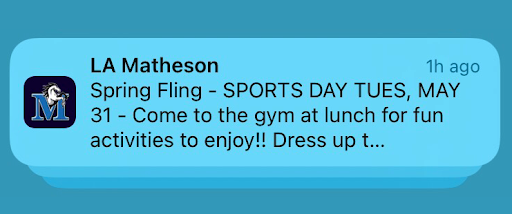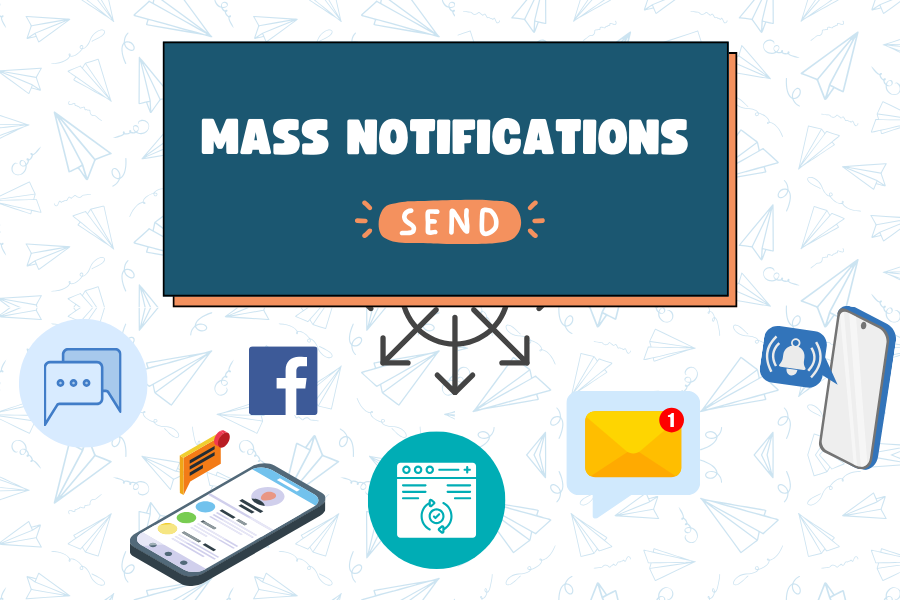In this article, we'll explain what a school mass notification system is and how it works. We’ll also explore the top five reasons why modernizing your mass notification system can benefit your school.
What exactly is a School Mass Notification System?
A mass notification system is built around automation and multi-channel integration. Or, in less business ‘jargony’ terms, it gives schools the ability to craft a message, target an audience, and then select multiple channels to distribute it on.
Some of the most common communications channels include:
- Social Media
- SMS text messaging
- Mobile App Notifications
This system can be provided through a school’s Content Management System (CMS) or through an add-on third party app like Hubspot or Klaviyo.
Channels included in Foxbright’s Mass Notification system:

What are the most common uses of a mass notification system?
While the actual usage varies depending on the specific needs, circumstances and location of each school, the following are some of the most common uses. We’ve prioritized them based on a combination of our own data and big data collected through search results.
- Emergency Notifications: The primary use of a mass notification system in schools is to provide immediate alerts during emergencies. These can include natural disasters, lockdowns, or other crises that require instant communication with parents, students, and staff.

- Two-Way Communication: Robust school communication systems allow for two-way communication, enabling parents and students to respond or provide feedback as necessary.
- Attendance and Balance Due Calls: Mass notification systems can automate attendance calls, informing parents if their child is absent from school or meal balances are due.
- Multi-Channel Messaging: Schools use these systems to send consistent messages via multiple channels such as email, voice messages, SMS text, social media platforms, and push notifications.
- Event Reminders: These systems can also be used to remind audiences about upcoming or ongoing events like examinations, school trips, or blood drives.

- Health and Safety Alerts: In the context of COVID-19 and other health concerns, mass notification systems have proven invaluable in disseminating health and safety guidelines, vaccination schedules, and related updates.
- General Announcements: Lastly, mass notification systems are commonly used for general announcements, such as changes in school policy, schedule changes, or news updates.

How does a Mass Communication System Work?
While the workflow can vary by platform, this video walks you through how the Foxbright system works via the mobile app.
Keep in mind that the process should be easy-to-use so that any person can implement it regardless of their technical abilities.
5 key benefits of a mass communication system
- Speed and efficiency: Schools can send out a message to a large volume of people within seconds. This means that if there is an emergency or a sudden change of schedule, parents and students are informed immediately. The system also provides parents with the correct and latest information; thus, reducing confusion that may cause anxiety and chaos in the community.
- Audience Customization: Users can subscribe to groups, schools or classrooms separate from the district wide messages that provide information that is relevant to them or their students. Schools can personalize the information sent to these individuals or groups. This customization feature ensures that every message sent connects to the appropriate audience, making the communication process smoother and more effective.
- Improved Relationships with Parents/Guardians: Parents/Guardians are notified about school events, daily schedule changes, and other important information that they need to know. Suppose a school has previously communicated via print materials only, such as newsletters and flyers. In that case, there may have been missed or outdated information that the mass communication system can solve. This feature leads to better relationships between parents and school, contributing to a better environment for learning.
- Accessibility: Relying on just one or two methods of communication runs the risk of isolating recipients that may not have access to that method. Perhaps some in the community don’t follow your social media or have a mobile device that can download apps. But by utilizing a diverse outreach strategy, you provide multiple options for connection based on recipients preferred medium and/or ability.
- Paperless communication: Schools can save money and time on mailing, printing, and other administrative tasks involved in traditional forms of communication. This aspect also has a significant impact on the environment since schools are becoming eco-friendlier – this can be seen as a win-win situation.
Conclusion
Trustworthy, timely and accessible school communication is a ‘must-have’ not a ‘nice-to-have’ in today’s educational climate. The cost-benefit analysis of these systems allows schools to embrace this technology for its ability to save money and time and connect with a more diverse group of parents, students, staff and community members.
When a school utilizes a Mass Notification system, teachers, students, administrators, parents, and the community benefit.
- Learn more about the Foxbright Mass Notification System
- Schedule a demo to see how it can work specifically for your needs.















